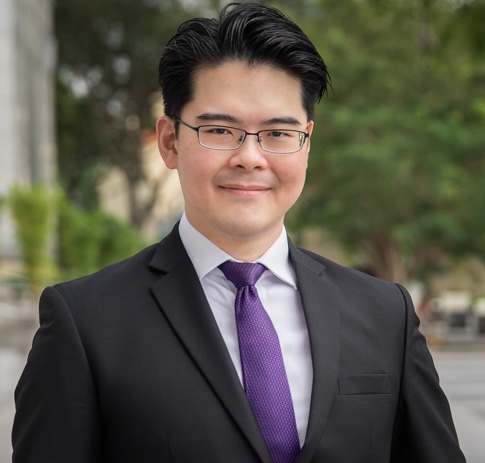It is an oft-repeated refrain in decisions on the division of matrimonial assets that the Court takes a ‘broad-brush’ approach. What this means is that the Court does not strictly require mathematical precision – where evidence is lacking, or where evidence is equivocal, the Court can exercise its discretion and make findings notwithstanding gaps in the evidence.
What happens, however, when on appeal the appellate Court makes a finding that changes the mathematics of the exercise? Is the Court entitled to exercise the ‘broad brush’ approach to disregard minor changes to the calculations?
This was the exact issue discussed by the Court of Appeal in the recently-released decision, VJP v VJQ, [2021] SGCA 82. The Court of Appeal’s decision was, no, a Court could not use the ‘broad brush’ approach in exercises of ‘pure arithmetic’. –
The Litigation
The dispute arose in the course of the ancillary matters in a divorce proceeding. The husband was a 50-year old in-flight manager with an airline. The wife was a 39-year old bank administrative officer. The parties were married for about 8 and a half years until the marriage was dissolved. The Court was tasked to decide the division of the matrimonial assets.
In the Family Court (VJP v VJQ, [2020] SGFC 62), the District Judge (“DJ”) assessed that the value of the pool of matrimonial assets was about S$2,305,219.75. The husband and the wife had direct contributions of 67% and 33% respectively, and indirect contributions of 45% and 55% respectively. The DJ arrived at an overall division ratio of 56% to 44% in the husband’s favour. To give effect to this division ratio, the husband was ordered to transfer the parties’ condominium unit to the wife, and to pay the wife S$65,000 in exchange for the wife transferring the parties’ HDB flat to him (“the division order”).
On appeal (VJQ v VJP, [2020] SGHCF 13), the High Court Judge adjusted the pool of assets by excluding an asset that the DJ found to be worth S$140,000, and by setting out of the pool of assets an undisbursed loan worth S$176,250. The Judge, however, declined to make adjustments to the division order. The Judge’s adjustments to the pool of assets thus made no change, practically, to what the wife would receive out of the division order.
The Judge’s decision formed the basis of an application by the wife for leave to appeal to the Court of Appeal. The Court of Appeal granted the wife leave to appeal, on just one issue, i.e.:
“When an appellate court decides that certain items of assets should be deducted from the pool of matrimonial assets determined by the lower court and maintains the parties’ percentage shares and the lower court has computed the distribution between the parties in those percentage shares based on the pool as found by the lower court, should the appellate court recompute the distribution on the same percentages based on the reduced pool as found by the appellate court?”
The Court of Appeal’s Decision
In the appeal proper, the wife argued that since the pool of matrimonial assets had changed, the calculations of the proportion of parties’ direct financial contributions should accordingly change as well. This was an exercise of pure arithmetic.
The husband, on the other hand, argued that the ‘broad brush’ approach applied and that the Court had exercised its discretion in deciding not to adjust the division order notwithstanding that the pool of assets had changed.
The Court of Appeal rejected the husband’s arguments, saying at [22] that where the Court’s determination involves a “purely arithmetical exercise”, there is no room for the Court to use its discretion to arrive at a different figure. The Court said that the ‘broad brush’ approach is relevant where the evidence is insufficient to establish precisely the parties’ respective financial contributions to the assets. In such a situation, the Court could use its discretion to make a ‘rough and ready approximation’ of the figures. However, where the evidence is sufficient to show exactly what the parties’ contributions were, the computation is purely arithmetical and the Court has no discretion to depart from that.
The Court of Appeal confirmed, as a result, that where the value of the pool of assets has changed on appeal, the parties’ financial contribution ratios will change as well. This is because it is also a purely arithmetical exercise in which the Court has no discretion.
The Court of Appeal re-computed and determined that based on the adjustments to the pool of assets ordered by the High Court Judge, the wife should have been entitled to a payment of S$117,665.73 instead of S$65,000.
The Caveats
The Court of Appeal, however, raised three caveats to its decision.
Firstly, this decision applied only to cases in which the ANJ v ANK, [2015] 4 SLR 1043, structured approach applied. In this structured approach, the overall ratio is computed mathematically having regard to the parties’ direct and indirect contributions, and the parties’ direct contributions are similarly often computed mathematically having regard to the overall value of the pool of assets and / or its individual constituents. The other available approach, the TNL v TNK, [2017] 1 SLR 609, approach, involves the Court determining the parties’ shares of the pool of assets with regard to trends in previously-decided cases with similar facts. The Court does not determine the division of assets by assigning the parties an isolated ratio for their direct and indirect contributions. As a result, the decision is less arithmetic and there is more room for the Court to exercise its discretion. This is otherwise known as the ‘broad brush’ approach.
Secondly, an appellate Court can still decline to adjust the division order where a re-computation would “yield a difference so miniscule as to be trifling“. However, the Court cautioned that an appellate Court that declines to adjust a division order on this basis has to be clear about its reasoning so that neither party can allege that there are mathematical errors.
Thirdly, this decision should not be interpreted as license for parties to re-litigate the values of their matrimonial assets or the amounts of their respective financial contributions.
The Court of Appeal was also emphatic that it would not be sympathetic towards appeals that resulted in minor changes to an order for division. The Court awarded the wife costs of her appeal, but this was purely on the basis that this was a legal question that was being decided for the first time.
The Takeaways
There is an oft held misconception that family law is an area of law where there is little certainty as far as asset division is concerned and where the Court’s discretion can result in decisions that are unpredictable. Whilst there is no precise mathematical formula that dictates the proportion of matrimonial assets that parties would receive in each case, this decision of the Court of Appeal makes clear that this is not the case – there are situations in which the Court cannot exercise discretion. Where a part of the Court’s decision involves a “purely arithmetical exercise”, the Court cannot exercise discretion to ignore the maths and arrive at a different result.
Thus the ‘broad brush’ approach, which to its credit is valuable in restraining litigation in an area where disputes are very often emotionally-charged, cannot be cited in support of a position that differs from a result that is mathematically arrived at. The Court retains the discretion to determine when matrimonial assets should be determined and valued, what the parties’ indirect contributions are, and whether any adverse inferences should be drawn against a party. However, the Court cannot use the ‘broad brush’ approach to arrive at a decision that is not supported by the maths. Similarly, parties cannot use the ‘broad brush’ approach to justify a position that is not supported by the evidence and the maths.
This decision shows that it remains important for parties – and for the Court – to be clear on how the ANJ v ANK structured approach is applied. When changes are made upstream to the pool of assets, it can affect, downstream, the computation of parties’ direct financial contributions and thus the final division orders. Parties and counsel must be alive to how minor changes upstream can have an impact downstream on the final order. This, whilst especially important on appeal, can have an impact on first instance proceedings as well.
While lawyers may not be accountants, this decision underscores the importance of lawyers getting the math right when it comes to effectively representing their clients in ancillary matters proceedings.
This article was first published by Asia Law Network here.


